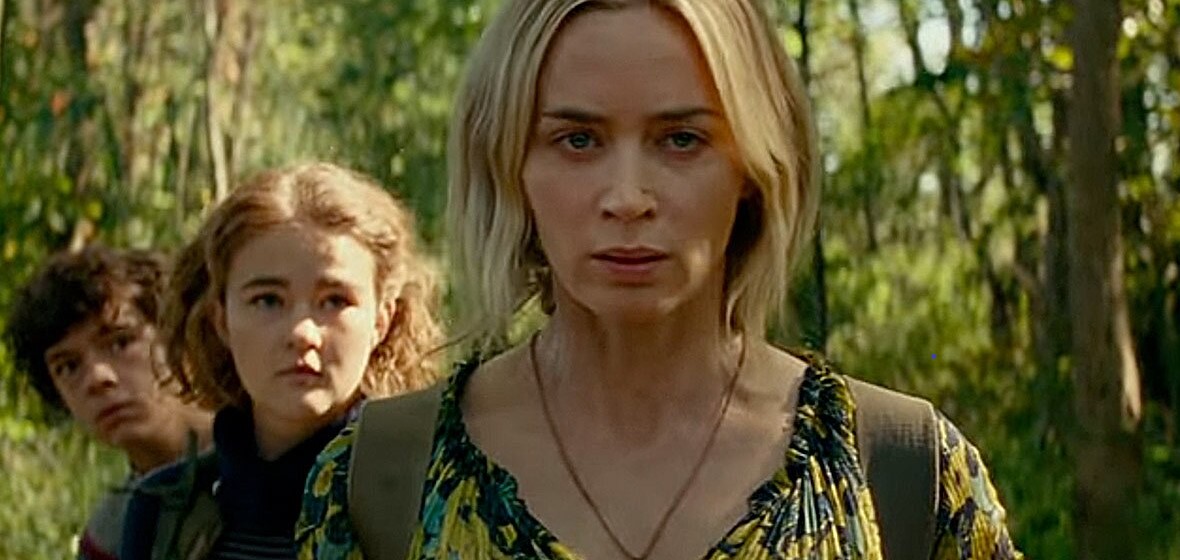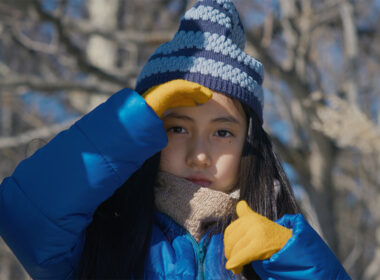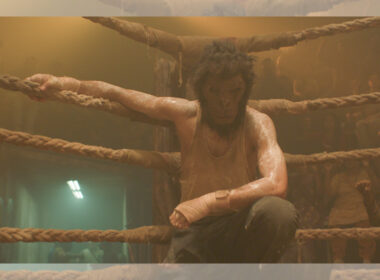Rating: ***
When John Krasinski released his debut feature A Quiet Place in 2018, it seemed that he was following the footsteps of fellow sitcom comedian Jordan Peele, whose debut horror breakthrough Get Out had been a tremendous critical and audience success just a year before.
It’s hard not to compare the two actors-turned-directors. Both made entertaining genre pieces coming from the world of televised comedy, and the most striking similarity between the two filmmakers is they clearly studied the lessons of filmmaking. Neither project felt like an easy cash-in: they were well-built, visually inventive works of filmmaking art. Many directors go through entire careers punching the card for a good check, and Krasinski and Peele made it look like they always had in them. Granted Peele’s was a provocative horror film about the complexities of racial relations in the US, and how it affects the trauma of African-Americans. Krasinki’s was a solid work of entertainment that barely scratched the surface of the theme it almost explored, but it was very well made.
For his encore Krasinski returns to that same place, and I understand. Where the first film ended felt almost like the start of something bigger, and any curious director would want to see just how deep the rabbit hole goes. So after an introductory flashback set on the day of the first attack, A Quiet Place Part 2 starts exactly on the shot the previous film left us – the moment where the surviving members of the Abbott family; mother Evelyn (Emily Blunt), daughter Regan (Millicent Simmonds) and son Marcus (Noah Jupe) triumphantly defeat the invading monster. Packed with the knowledge of how to defeat these beasts and hoping to find refuge for themselves and their newborn child, the Abbotts make their way towards finding more survivors.
While the first film was contained and straight-forward, relying so much on the tension of their predicament that it benefited from the lack of dialogue, the second film expands outside of their home to show us the extent of this post-apocalyptic wasteland and how it has affected those who continue to survive. We first meet Emmett (Cillian Murphy), a recluse still mourning the death of his wife and child. Emmett doesn’t want to help anybody, in fact, he does’t trust anyone or, as he says, “those who survived are not worth saving”, which probably also includes him. When Regan heads out on her own to look for a radio tower capable of transmitting a monster-killing signal, Evelyn pleads Emmett to look for her and bring her back—which in film language means a chance to atone for not saving his own family.
The film cuts mostly between Emmett and Regan’s road trip to the safe island, and Evelyn and Marcus fighting one monster in the bunker. While Krasinski expands the universe beyond the limited borders of his protagonists, he doesn’t try to complicate things further. He cleverly parallels the set pieces so everything bad happens to both parties at the same time. He doesn’t waste time explaining the odd social ramification of this broken society. Later, like Chekov’s gun, we’re introduced to those “who are not worth saving”, with some curious characterisations; they all wear dirty working class clothes and look like generic hillbillies, contrasted with the peaceful community (led by the always charismatic Djimon Hounson) of city slickers who live comfortably in white-picket fence gated communities. One group is rational, educated, middle class from the city; the others are savages, lowbrow, provincial oafs who attack outsiders instead of giving them shelter. We’re in a post-Trump era. It’s really not that hard to get it.
It’s the closest the film comes to even an inkling of insight, even if it’s tremendously patronising. Krasinski is a great director, but again he sells his own talent short. This time he penned the script himself and kept the exact shortcomings from the first film, which had three writers. Visually he nails it. I can see him studying some masters of modern blockbuster filmmaking to try to recreate emotional magic, and in the most part he succeeds.
The start, with its long chaotic shots in the midst of rural panic, is a good reinterpretation of Alfonso Cuarón’s Children of Men, while a tremendously tense moment near the end is a shot by shot homage to the kitchen scene from Spielberg’s Jurassic Park. There’s nothing wrong with learning from the best, especially when Krasinski seems to understand the why of those scenes, instead of trying to mimic them. But what those two films had were layers of moral complexity and thematic statements that carried the plot and the choices made by its characters. A Quiet Place Part II almost gets there but it’s so concerned with keeping us entertained, it forgot that it’s even better to be unforgettable.




